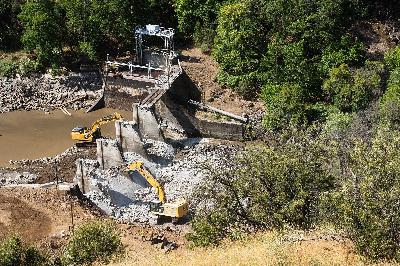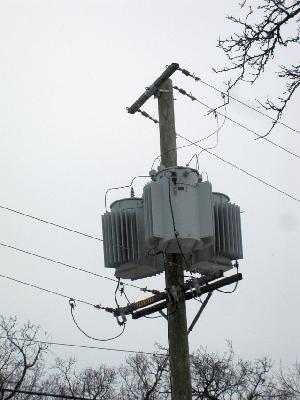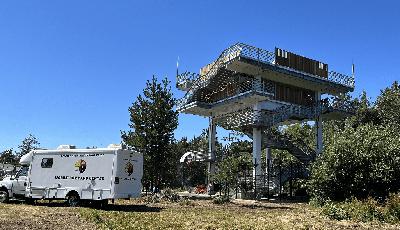Discover The Infrastructure Show - Podcasts
The Infrastructure Show - Podcasts

The Infrastructure Show - Podcasts
Author: Professor Joseph Schofer, Thomas Herman, and Marion Sours
Subscribed: 220Played: 4,382Subscribe
Share
© 2009-2025, The Infrastructure Show and show creators
Description
The Infrastructure Show consists of monthly podcasts in which some of the nation’s top infrastructure experts discuss with host Professor Joseph Schofer of Northwestern University specific infrastructure projects, technologies, processes, financing arrangements, and the condition of our infrastructure today, and what can be done about it.
13 Episodes
Reverse
Orange County, California has been treating wastewater and injecting it into its groundwater supply system since 2008. This is the largest indirect – cycled through the aquifer – potable water reuse system in the world. The treated recycled water has properties close to distilled water. To explore this process in detail, we talk with Mehul
Motor fuel taxes have long been the primary source of both federal and state funds for U.S. highways. In recent decades, the sufficiency of fuel taxes has come into question as vehicles have gained in fuel efficiency and electric vehicles have become more common. As the time nears for the US Congress to re-authorize the
Decades in the making, the Hudson River Tunnel Project is adding two railway tunnels between New Jersey and New York to serve Amtrak and New Jersey Transit riders. These tunnels will increase rail capacity and add critical redundancy to the network. To learn about this project, we’re talking with Thomas Prendergast, CEO of the Gateway
Irving, Texas, a city of about 255,000 people near Dallas, is growing fast, and its water supply and wastewater systems must be upgraded to support rapidly increasing demands. To do this, Irving has created a multi-year, citywide program to maintain and expand its water management systems. To learn more about this large-scale municipal infrastructure program,
Four dams were removed from the Klamath River in 2023-24 to bring it back to its natural, wild state. These dams provided water and power to the region but blocked spawning salmon, and they were declared economically inefficient by their owner. This was the largest dam removal effort in U.S., leading to the restoration of the river, its environment, and services to Native American communities. To explain the motivations, methods, and outcomes of this project, we talk with Brian Graber, Senior Director of Dam Removal Strategies for American Rivers, a 50-year-old not-for-profit organization which advocates for the health and restoration of U.S. rivers. Brian earned a B.A. in geography from Dartmouth College, and M.S. degrees from the University of Wisconsin-Madison in civil and environmental engineering and in geography.
In 1979, one of two nuclear reactors at the Three Mile Island power plant near Harrisburg, Pennsylvania, suffered a partial meltdown. The second reactor was shut down 40 years later for economic reasons. Now, work is underway to restart that second reactor to produce electricity for a single customer, Microsoft. To learn what it takes to restart and ensure the safety of a nuclear power plant, and to explore the role of nuclear energy in a mix of renewable resources, we’ve invited back Dr. Elmer Lewis, professor emeritus of mechanical engineering at Northwestern University. Dr. Lewis is the author of the books “Nuclear Power Reactor Safety” and “Fundamentals of Nuclear Reactor Physics,” and he will soon publish his latest book, “Renewables or Nuclear, Which Should Lead in Curbing Climate Change?
Public-private partnerships (P3s) can be important strategies for financing transportation and other large infrastructure projects. Advancing public infrastructure projects with P3s requires careful analysis of the associated costs and the sharing of risks and rewards.To learn about trends in P3 financing, we speak with Professor Jonathan Gifford of the Schlar School of Policy and Government at George Mason University and Director of the Center for Transportation Public-Private Partnership Policy. Jonathan earned his BS in civil engineering from Carnegie Mellon University and an MS and PhD in civil engineering (transportation) at the University of California, Berkeley
The Tennessee Valley Authority (TVA) is the largest public power company in the United States. It also controls flooding, assures navigability and recreation, and protects the environment across seven states on the Tennessee River System. Established in 1933 to combat the depression, TVA is in its ninth decade as a self-sustaining entity.To understand the TVA as an enduring infrastructure project, we talk with Pat Ezzell, senior program manager and resident historian for TVA. Pat has authored a number of articles and two books on TVA history. She also hosts a social media and video series highlighting the TVA region
Ships hit bridges much more often than people realize, and while most of the outcomes are minor, such events can present big risks to bridge users, ship operators, and infrastructure. Bridge design standards that address such risks are issued and updated periodically by the American Association of State Highway and Transportation Officials, but they do not mandate adding protection to existing bridges. Yet the size of ocean-going cargo has grown substantially in the past 30 years, amplifying the risks for bridges over ocean-connected waterways.To understand just how safe our major U.S. bridges are today, we talk with Mike Winters, P.E., who is Senior Structural Engineer with Moffatt & Nichol, a U.S.-based global infrastructure advisor. Mike is the principal U.S. representative to an international committee established by the Permanent International Association of Navigation Congresses to develop guidelines associated with ship collisions with bridges and other fixed structures
Transformers step-down voltage from high levels most efficient for long distance transmission to lower levels for safe distribution to homes and businesses. Having enough transformers for replacement and to support expansion of the electrical grid is essential for ensuring reliability of the power system, but currently there is a shortage of transformers.A study by the National Renewable Energy Laboratory (NREL), a U.S. Department of Energy lab, assessed the factors affecting demand for distribution transformers. To tell us about the findings of this analysis is one of the authors, Killian McKenna, Group Manager of Electrical Engineering for NREL. Killian earned a PhD in Electrical Engineering from University College Dublin
The Chicago Transit Authority’s $2.1 billion Red and Purple Line Modernization Project (RPM) is rebuilding a 5.6-mile elevated rail rapid transit structure and four stations, ensuring structural integrity, expanding capacity, and improving ride quality along a corridor on the North Side of Chicago. Included in this six-year project is removal of a failing embankment and returning land to the community.Here to talk with us about this project is Grace Ohs, Chicago Transit Authority RPM vice president and project lead. Grace earned her BS in Civil Engineering from the University of Illinois.
Earthquakes can generate massive tsunamis that pose severe risks to coastal communities. The 2004 earthquake off Sumatra spawned a tsunami that killed an estimates 228,000 people. Facing its own tsunami risk, the Shoalwater Bay Indian Tribe built an evacuation tower serving the coastal community of Tokeland, Washington. This tower can hold more than 400 people, and it is a model for vertical towers that might be constructed in other tsunami hazard zones.Here to describe this project is Maximilian Dixon, Earthquake Program Manager for the Washington Military Department’s Emergency Management Division. Maximilian earned three degrees from the University of Washington: a BS in Environmental Policy and master’s degrees in urban planning and infrastructure planning and management
Digital twins are virtual representations of real systems used to test designs and operating policies in safe environments prior to implementation or offline. Applications include a variety of public and private facilities, notably airports and operating systems such as water supply and manufacturing processes. Much of the work is centered in architectural and engineering firms, with its foundation in Building Information Modeling (BIM).To understand digital twins and their infrastructure applications, we talk with Howard Shotz, a Vice President at Arora Engineers, where he leads the Global Smart Infrastructure practice. A graduate in architecture from Temple University, Howard is former Director of the Digital Twin and Digital Advisory Practice at Parsons Corporation

















